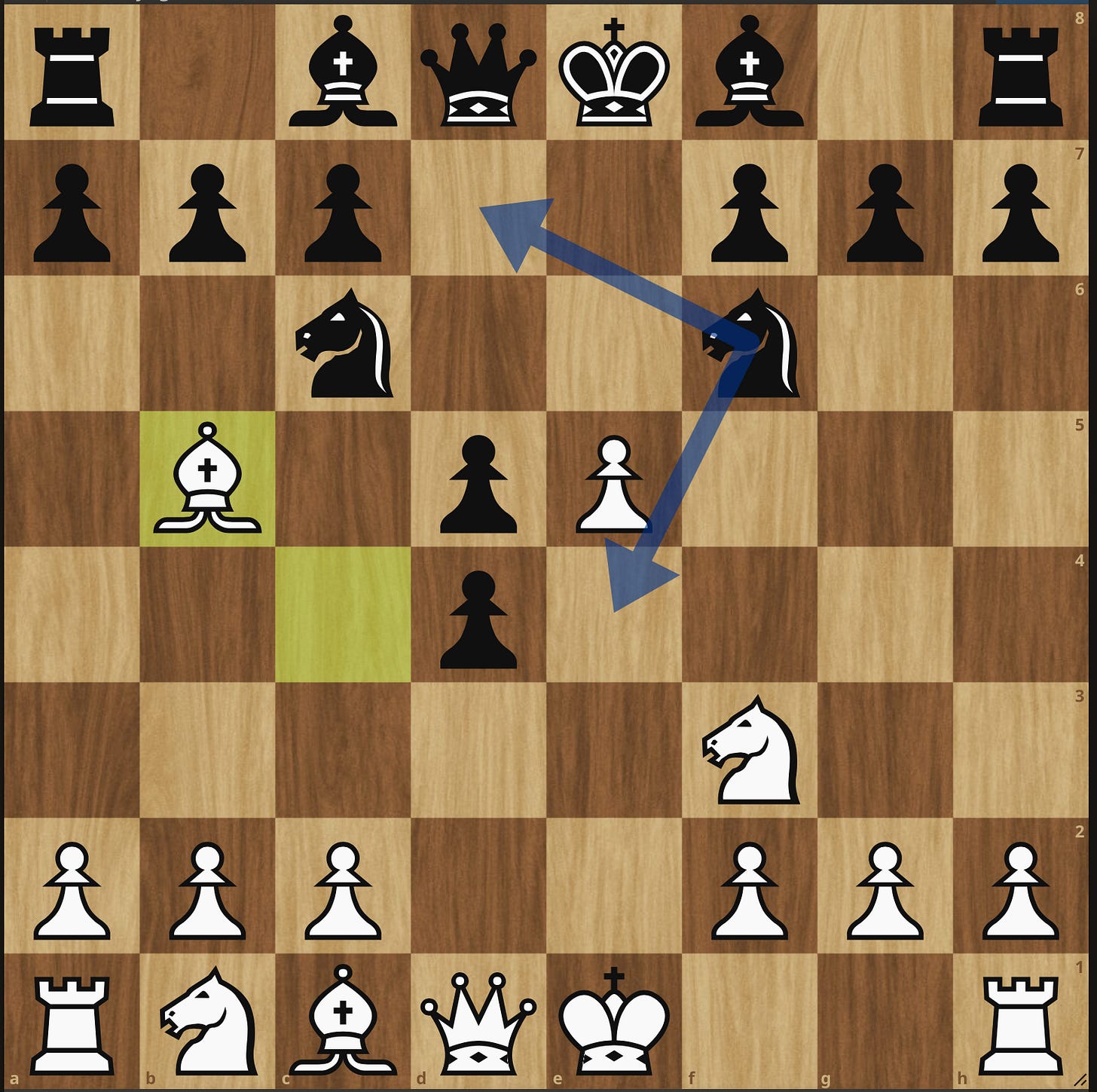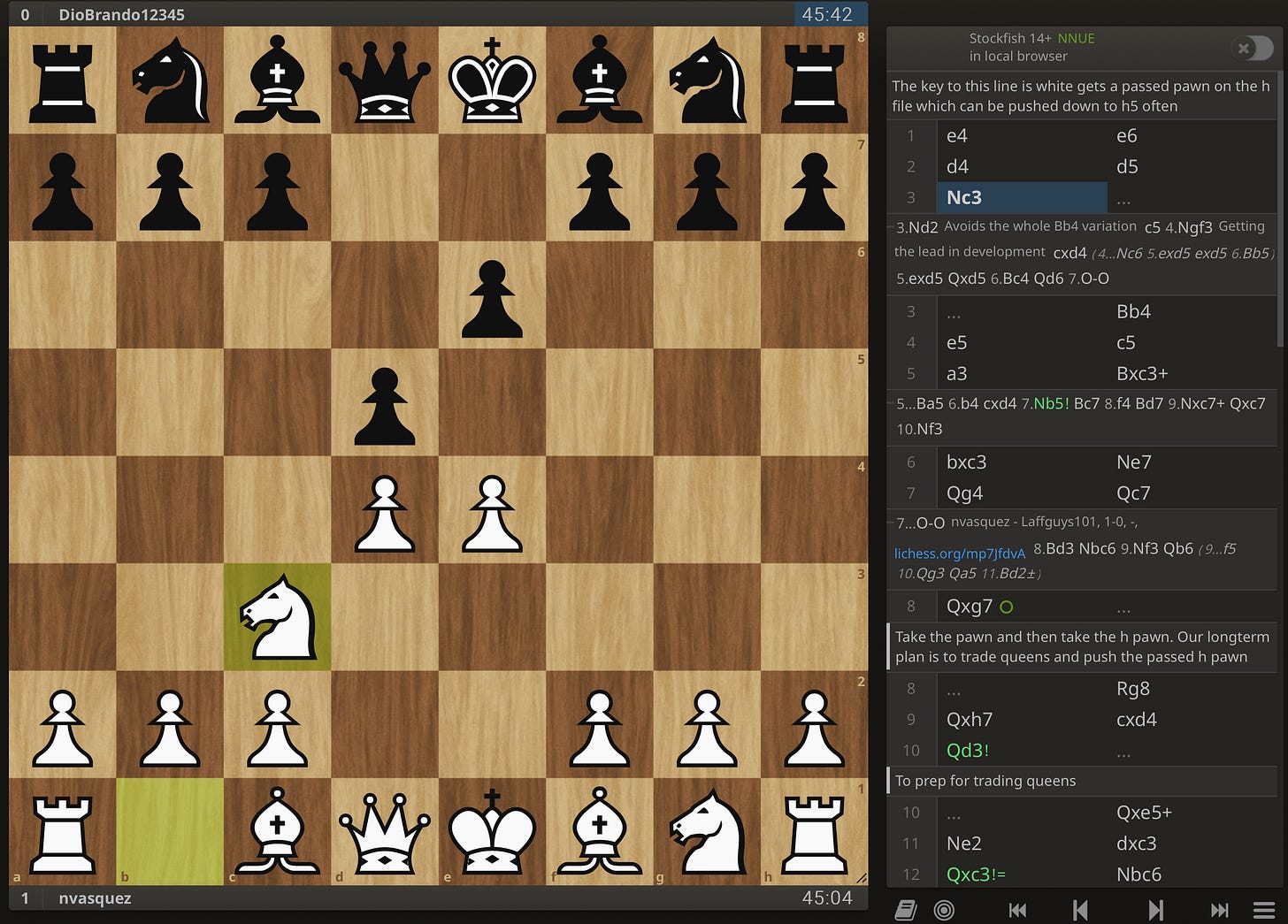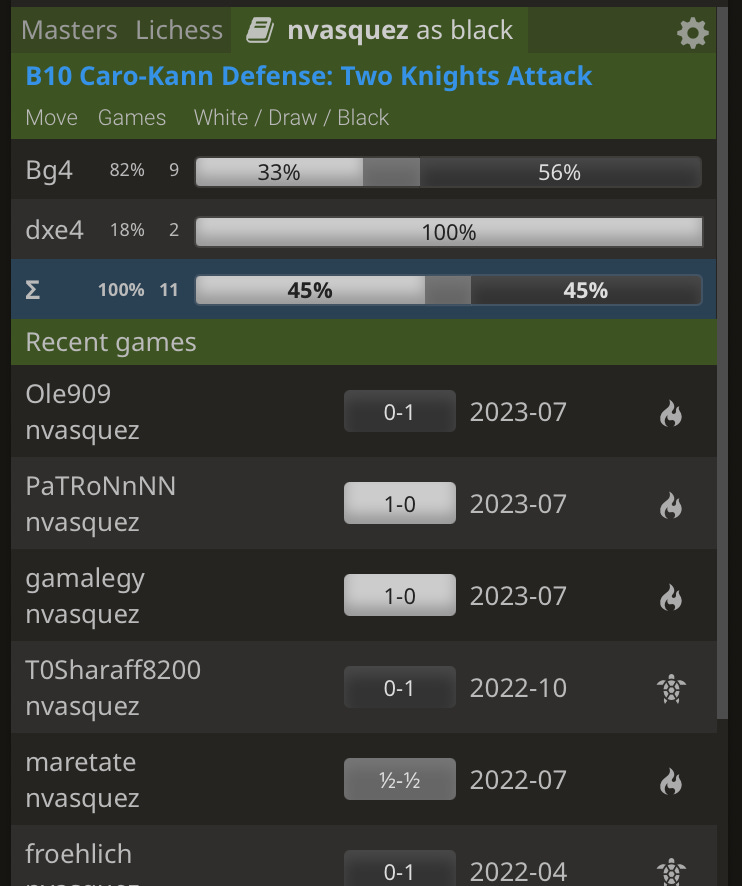Let’s talk openings. Currently I’m trying to figure out how to build a better repertoire. When I first started playing all those years ago life was simple. I’d play 1.d4 and go for the Queens Gambit with all the traps should the gambit be accepted. Won a lot of games those days… but then I got rated above 1000 and they stopped working as much. So I changed to 1.e4 at my coaches request.
So how does a chess player build a repertoire? You’ll need to know the rating range you play in, your general playing style, and how well you know/like the positions you get. I personally use Lichess Studies to make my files and use games I’ve played as the starting point.
First a warning - opening study is the epitome of the paradox of choice. There are too many choices and they all work.. sort of. You can buy courses from Chessable.com, read opening books, watch You Tube videos, search gchess.com, work through Lichess.org Opening Studies, complete Chess.com lessons. You can even have coaches give you opening files. Almost all lines work…IF you know them very well. Of course your opponent has a say as well so whatever game you play will depend on the both of you. Since none of us reading this post are Grandmasters, few if any of us have all our lines memorized.
So let’s look at my 1.e4. For simplicity’s sake I will focus only on White here. Years ago my coach had suggested I switch to a more aggressive opening style to learn the value of tempo, space, and to get more tactical games to work on my calculation. Building my repertoire meant playing in a more aggressive style, trying to learn the positions that resulted, and remember them all. No easy task
I quickly found that Black has lots of options against 1.e4. Black will be able to steer the game however they want. The sheer number of responses to 1.e4 is crazy. Here’s the Lichess player DB (filtered for my rating groups) responses ranked by frequency played.
Honestly this is intimidating! What response do I need to prepare for? Ones’s I’ll see most often? Ones that work best for Black? Flexible ones that can transpose? Do they even matter? I find it odd that white wins 51% of the time against 1…e5 and 1…a6. Just looking at the odds I would be tempted as Black to play 1…c6 as it scores the best. Or maybe 1..Nf6 as it seems to give both sides equal chances?
I went through the top 6 responses and have put together files for each. I generally know what to play against 1…e5, the Sicilian, the French, the Caro Kann, and sort of know what to do against the Pirc. However, it’s a process.
Having worked through this processes let me share how to go through it yourself. There’s no one way. Much like Luke making his own lightsaber, this is a step we must do on our own to complete our training.
There’s a series of 4 questions to ask that will guide you:
#1) Are you rated > 1850 USCF?
If the answer is yes congratulations, you’re amazing! For you and any player above you then openings start to really matter. You’ve not only mastered the basics but deploy solid principles and tactical knowledge every game. As a result, the game will greatly hinge upon the advantages and imbalances you get out of the opening. You’ll need to know the difference between 4…Nf6 or 4…Qb6 in Open Sicilian for example. You will need to know the pawn structures and tactics pretty well as you can expect your opponent will. You will likely need detailed files to review ahead of games.
If no, then welcome! You’re in great company (me!) and in luck. Openings likely won’t matter as much since our opponents are more likely to play inaccuracies or dubious moves against us. Also we’re more likely to forget critical lines or play the moves slightly out of order. Here it’s more important we focus on the fundamentals and pre-move calculation while worrying so much about the latest line from Stockfish or Nakamura. Yes, we might lose to someone who knows the line better than us but that won’t happen as often as we fear. Rather we’re more likely to get ourselves in trouble by following opening theory we really don’t understand.
For example I sometimes play the Scotch Gambit. My files prepare me for either Ne4 or Nb7. So what do I do if someone plays Ng4 or Qe7? Those are mistakes for sure, but how do I take advantage of them? It’s better if I REALLY understand the dynamics of the position and not follow the moves slavishly.
For any player roughly < UCSF 1850, its better to know maybe 8-10 moves of any line, the general plans of the opening, and then just go play. The key is at least analysis of the opening lines afterwards and not focusing on rating.
This leads us to question #2) What’s your playing style?
Are you an aggressive player who loves open positions with tactics all over the board? Are you a positional player who just loves to get outposts for their knights? Do you love endgames? All of these form part of your chess personality. In fact there’s even a website that will help you figure that out:
https://www.chesspersonality.com
I make no claims as to the accuracy of the process but it was fun to see what my style is similar to.
You can see there are openings suggest for me in the results. I do not as of yet play any of these, but I do play the Caro Kann as Black which is really like an improved French. I do wonder though my it doesn’t suggest the Alekhine Opening of 1…Nf6 against 1.e4? However, I’m curious now to explore them and I find it ironic that it suggests I return to 1.d4.
Playing style is critical for you to know as it will correlate to how comfortable you are playing the resulting positions out of the opening.
Now we come to the most important question, #3) Can you say WHY a move is good in the opening?
Understanding the why is crucial. One of my coaches said the best opening files are where you put a lot of words why that move is the best. Here’s what I have for one line against the French:
Notice all the reasons why on the right. What’s the idea, what’s the plan? This is one of my best lines since I know the “why” behind it. The others are not developed as much. Each time I deepen my repertoire it’s simply to add as much comment around the “why” as I can.
This is perhaps the easiest way to improve your opening knowledge yet (at least in my experience) the least utilized. Write it out in plain language what is going on in the position and you won’t forget your lines. You’ll understand what the position is all about and your eyes will naturally look for the “right” moves.
Last question, #4) Are you willing to lose?
Blitz can be a fantastic way to test your general repertoire knowledge. You won’t be able to get your specific line you’re looking for, but you will get a lot of games in over a short period of time. If you want, make a study of these games and see how you did with the opening recall. Look back over the game and find out where you left your theory. You’ll find the holes in your repertoire knowledge awful quick!
This was a game of mine where I made a common mistake for me. I’ve had this position at least 11 times and twice I played dxe4 which is a losing move out of the opening.
Much better is Bb4, getting the bishop outside of the pawn chain, then playing e6. Now I know the why of that position, I don’t play dxe4 any more.
So let me sum up. We can build a repertoire in 4 steps
Assess how important openings are to you. Generally < USCF 1850 they’re not that important. Opening files can simply be 8-10 moves in any particular line. Then just go play
Determine what kind of player you are, your chess personality. Select openings that match that style.
In your files, really try to explain why a move is good. Try to understand what’s going on in the position so when you face unsound moves you can take advantage of them.
Test your opening knowledge by playing blitz. Don’t be afraid to lose, you’re going to learn what you don’t know you don’t know
Thank you as always for reading. Please leave a comment if you agree or disagree with what I said. Let me know, what you do for your openings?










I took the chess personality quiz and got "Barbarian". Their example for that personality type was Hikaru Nakamura, but I know Naka and his is not my style. Funny how these things work out though. Great post, Nick!